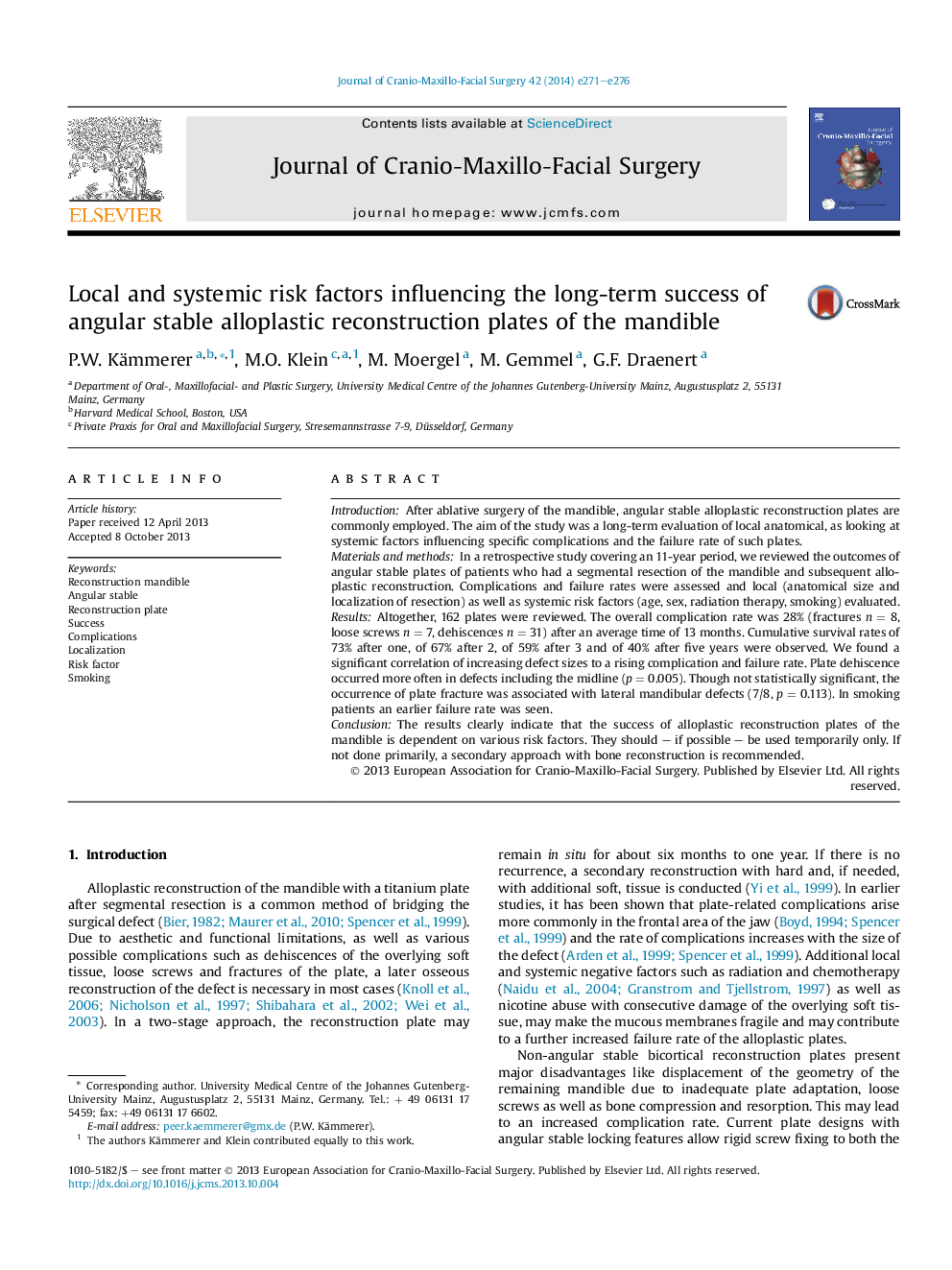| Article ID | Journal | Published Year | Pages | File Type |
|---|---|---|---|---|
| 3142638 | Journal of Cranio-Maxillofacial Surgery | 2014 | 6 Pages |
IntroductionAfter ablative surgery of the mandible, angular stable alloplastic reconstruction plates are commonly employed. The aim of the study was a long-term evaluation of local anatomical, as looking at systemic factors influencing specific complications and the failure rate of such plates.Materials and methodsIn a retrospective study covering an 11-year period, we reviewed the outcomes of angular stable plates of patients who had a segmental resection of the mandible and subsequent alloplastic reconstruction. Complications and failure rates were assessed and local (anatomical size and localization of resection) as well as systemic risk factors (age, sex, radiation therapy, smoking) evaluated.ResultsAltogether, 162 plates were reviewed. The overall complication rate was 28% (fractures n = 8, loose screws n = 7, dehiscences n = 31) after an average time of 13 months. Cumulative survival rates of 73% after one, of 67% after 2, of 59% after 3 and of 40% after five years were observed. We found a significant correlation of increasing defect sizes to a rising complication and failure rate. Plate dehiscence occurred more often in defects including the midline (p = 0.005). Though not statistically significant, the occurrence of plate fracture was associated with lateral mandibular defects (7/8, p = 0.113). In smoking patients an earlier failure rate was seen.ConclusionThe results clearly indicate that the success of alloplastic reconstruction plates of the mandible is dependent on various risk factors. They should – if possible – be used temporarily only. If not done primarily, a secondary approach with bone reconstruction is recommended.
